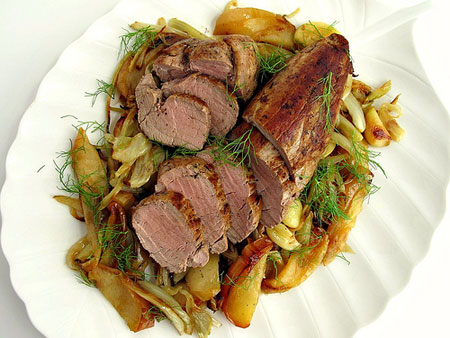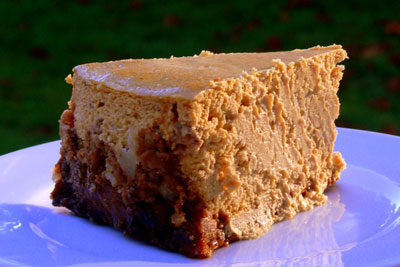
1. Hachiya. No, it is not a greeting. It’s a persimmon.
2. Fuyu. No, not the clothing line (that’s FUBU). They are also persimmons. Not to be confused with Russell Simmons (who incidentally created Phat Farm, not FUBU).
There are about a dozen varieties of persimmons grown throughout the world; only two are generally found in the States: Hachiya and Fuyu (Fuyugaki). Both are Japanese.
Though Hachiya and Fuyu persimmons are both fun to say and have similarly pumpkin colored skin, they are different in shape, texture, and culinary use. It’s important to know the difference between them; otherwise, your persimmon eating experience will be memorable for all the wrong reasons.
Hachiya persimmons are acorn shaped and have deeper orange skin with black streaks on it. They are astringent, which means they can be eaten only when fully ripened. A ripe Hachiya is extremely soft and should be squishy in your hand. Removing the thin skin reveals coral colored flesh so thick and glossy it looks like marmalade, and tastes like it too -- it's pleasingly sweet with hints of mango and apricot. Though they can be enjoyed raw, Hachiyas are really prized for baking.

 Apples are officially in season and I'm excited to get cooking and baking with them. Fall is one of the best seasons for food, just because there's finally an opportunity to make hearty meals that all appeal to our comfort zone. Apples, more than any other fruit, best represent the season. They're combination of sweet and tart flavors, contradictory as well as complementary traits, seem to fit the unpredictability of autumn just perfectly.
Apples are officially in season and I'm excited to get cooking and baking with them. Fall is one of the best seasons for food, just because there's finally an opportunity to make hearty meals that all appeal to our comfort zone. Apples, more than any other fruit, best represent the season. They're combination of sweet and tart flavors, contradictory as well as complementary traits, seem to fit the unpredictability of autumn just perfectly. Who doesn't love pumpkin cheesecake (a million hands just went up, right?). And who wouldn't love pumpkin cheesecake with a gingersnap-pecan crust? Well you've come to the right place.
Who doesn't love pumpkin cheesecake (a million hands just went up, right?). And who wouldn't love pumpkin cheesecake with a gingersnap-pecan crust? Well you've come to the right place. I work at home. Translation: I love a distraction. The kitchen? Definitely the number one destination for diversion. Even on days when recipe developing is not on my to-do list, I like to wander in to my favorite room and concoct a little something every few hours. Something quick, something that might work for our dinner later. Even better, something that might last for a few days.
I work at home. Translation: I love a distraction. The kitchen? Definitely the number one destination for diversion. Even on days when recipe developing is not on my to-do list, I like to wander in to my favorite room and concoct a little something every few hours. Something quick, something that might work for our dinner later. Even better, something that might last for a few days. Years ago I made an oatmeal cake that was moist, dense and delicious with a thick layer of cream cheese frosting slathered over the top. When we had out-of-town friends staying with us last week, I thought of that cake that I haven’t made in years when I served baked oatmeal for breakfast one morning.
Years ago I made an oatmeal cake that was moist, dense and delicious with a thick layer of cream cheese frosting slathered over the top. When we had out-of-town friends staying with us last week, I thought of that cake that I haven’t made in years when I served baked oatmeal for breakfast one morning.
